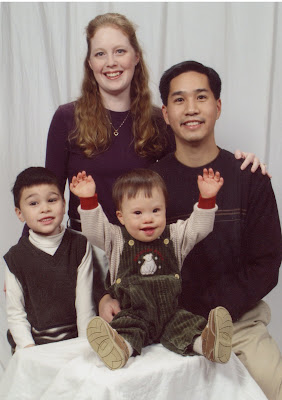This past weekend I read Not the End of the World, a teen novel by British writer Geraldine McCaughrean retelling the story of Noah’s ark and the flood from the perspective of Noah’s daughter Timna. (No, she’s not a biblical character, but could have been; as she says pointedly in the narrative, the only ones that are remembered are the sons.) The book won Britain’s Whitbread Award a few years ago. A very compelling story, more interesting and less predictable than many American Christian novels. And very sobering to consider the realities of the deaths of those who perished in the flood.
Then the other night when reading bedtime Bible stories to our kids, we read a children’s Bible version of the angel of death killing the firstborns of Egypt. A challenging narrative to explain to a five-year-old! Josiah asked, “Was it a good angel or a bad angel?” And we said something like, “Well, he was a good angel, and his job was to do a very sad thing because the bad king was not listening to God.”
We had also recently read about Herod’s killing of babies in Bethlehem, and we could tell Josiah was thinking hard about all this. Josiah asked, “Is there an angel in our room? Will he come take Elijah away?” We didn't point out to him that actually, he's the firstborn, not Elijah. The best we could say was that he shouldn't be afraid of an angel taking his brother away because we’re not like the bad king of Egypt. But in retrospect, of course, that’s just a temporary stopgap answer. Soon enough he'll be old enough to really start wrestling with the “Why, God?” questions of theodicy and whether God causes innocent death.
These biblical “texts of terror,” as some commentators call them, are always disturbing, as they probably should be. It's tricky reading the full scope of Scripture with our kids because of developmental issues. We don't want our kids to end up like former fundamentalists who walked away from a picture of the faith that only seemed to emphasize the harsh aspects of God. But the flip side is that children’s Bibles are often sanitized clean of the dark side of the biblical narrative, which probably reinforces our cultural Christian aversion to anything unpleasant or discomfiting. It's easier to talk about Noah's ark as a floating zoo and look at pleasant pictures of cute pairs of animals than to try to work through all the implications of global genocide.
But the global reality, and the majority of human history, is one where suffering and death are the default. I'm also in the midst of reading Mysteries of the Middle Ages by Thomas Cahill, who reminds us that back then the average life expectancy was around 25, and rampant disease and death were normative. An NPR story a few weeks ago mentioned that just a few hundred years ago, pregnancy after age 30 was almost a certain death sentence. And still is, in many places today. I was also skimming through David McCullough's 1776, and it seems like the lessons of history are that every era pretty much was awful, in terms of war, disease, famine, death and all the rest. As conflicted and messy as the world is today, we're still far better off than most people throughout the ages.
Well, I've been rambling. Maybe the lessons of the biblical narratives, modern history and international news is that we must always be aware of suffering and injustice in the world and look for ways to alleviate it. Gratitude that things are not as bad as they could be and have been, and hopeful activism to minister to a hurting world.
Subscribe to:
Post Comments (Atom)

1 comment:
Life is filled with terror. If we shelter children from this fact, we do them harm. Of course, we also need to give them a sense of hope, which of course Christ (and God general graciousness) provides.
Post a Comment